Abstract
Reactions to published accounts of research with human subjects, as well as research with nonhuman subjects, were assessed by examining citations in several samples of empirical articles in the Journal of the Experimental Analysis of Behavior. A stable, asymmetrical pattern emerged: Nonhuman research was cited in both human and nonhuman articles, but human research was cited primarily in human articles. Thus, human operant research appears to have had little influence on the nonhuman research which constitutes the bulk of the experimental analysis of behavior. Interpretation of this lack of impact depends on the functions one envisions for human research, several of which are discussed.
Full text
PDF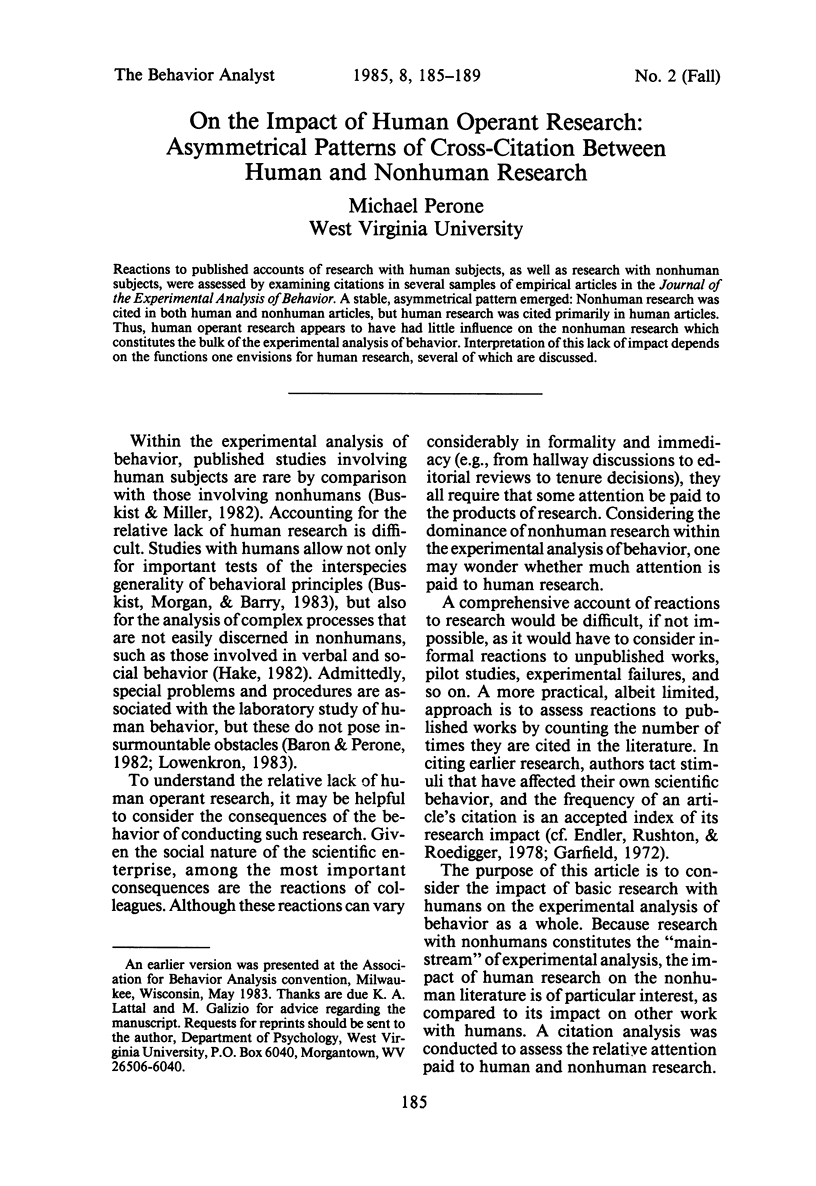
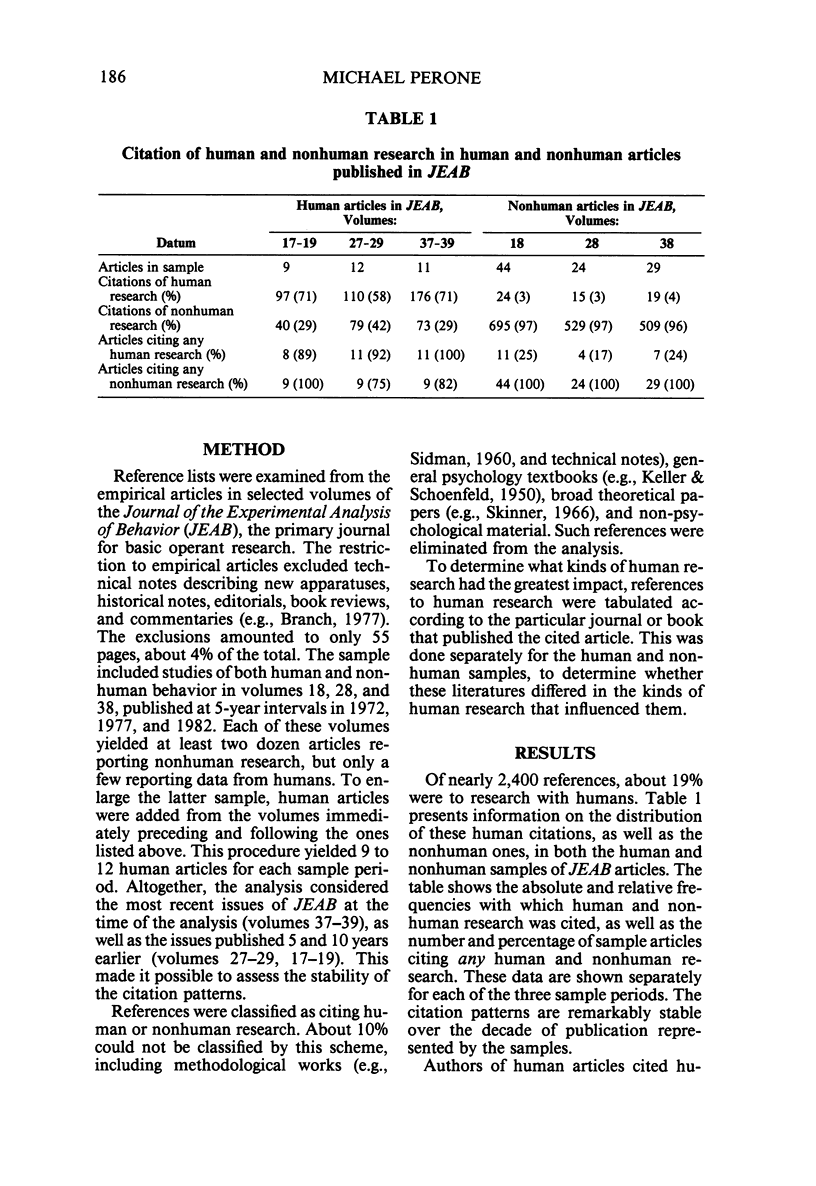
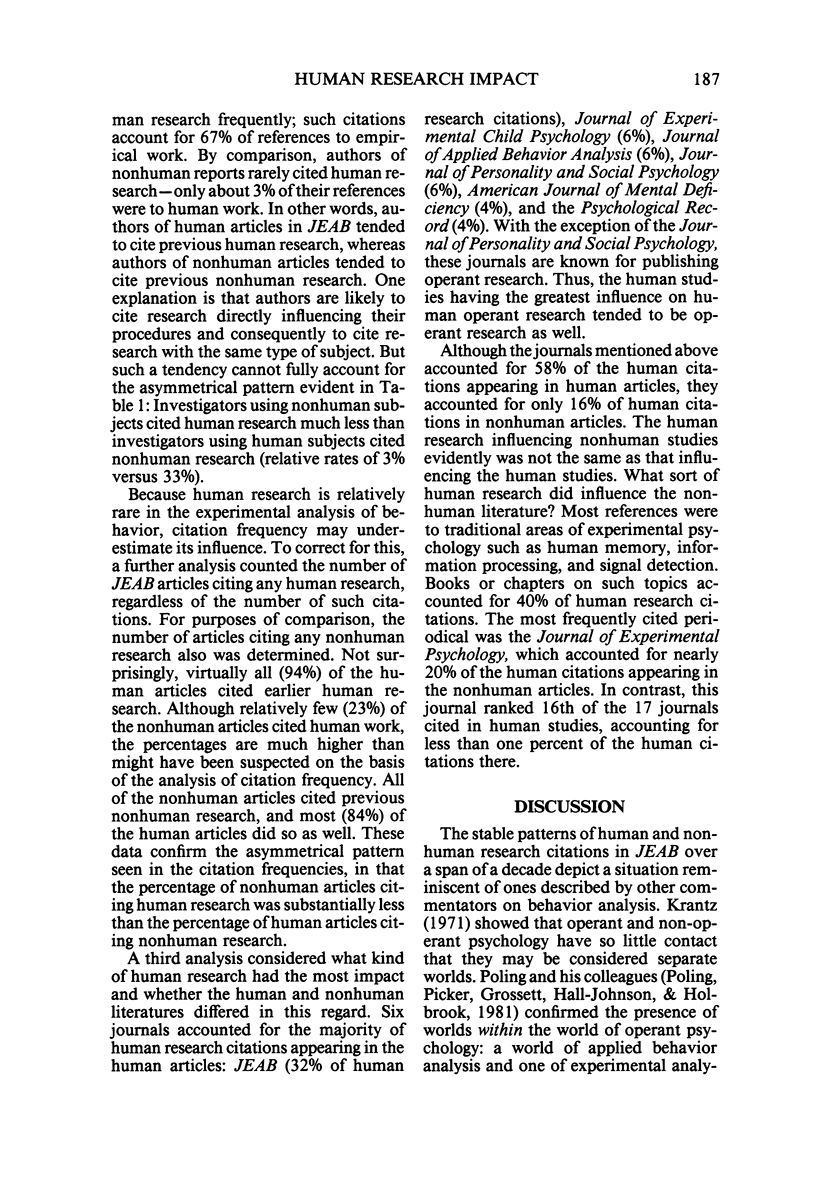
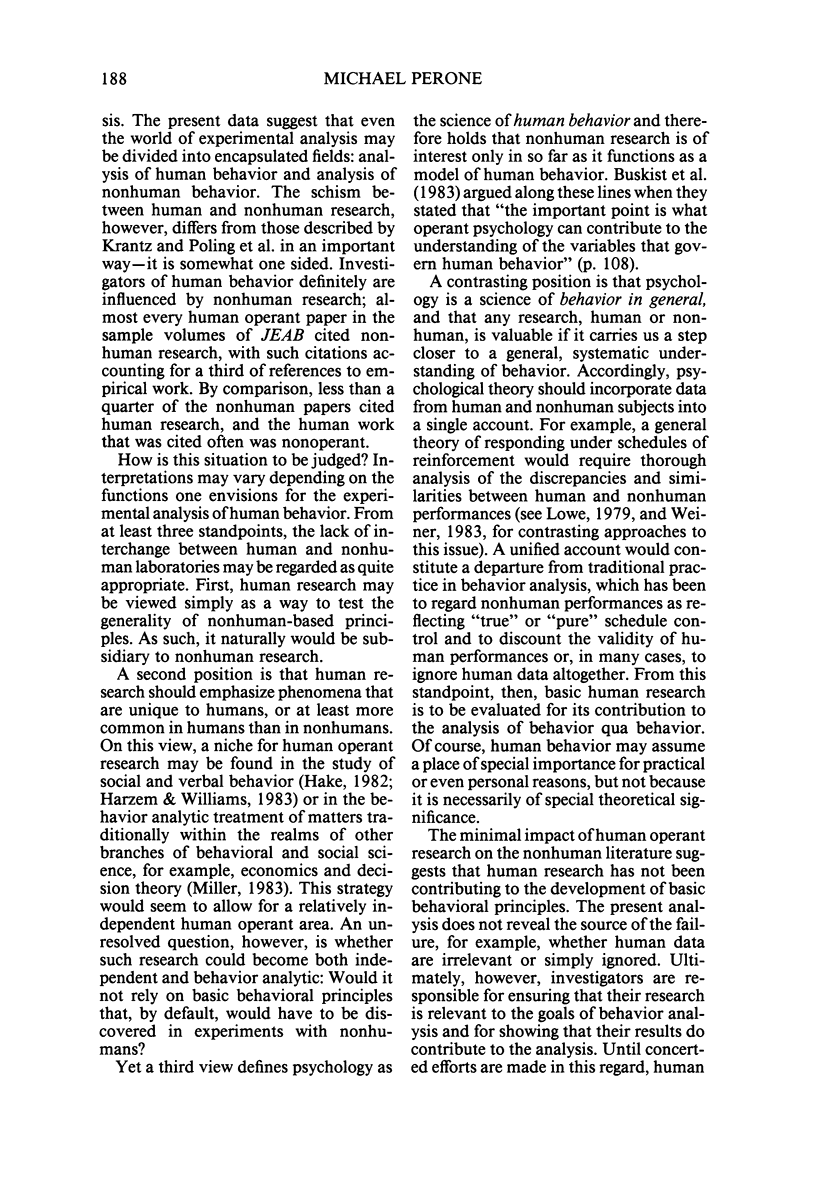
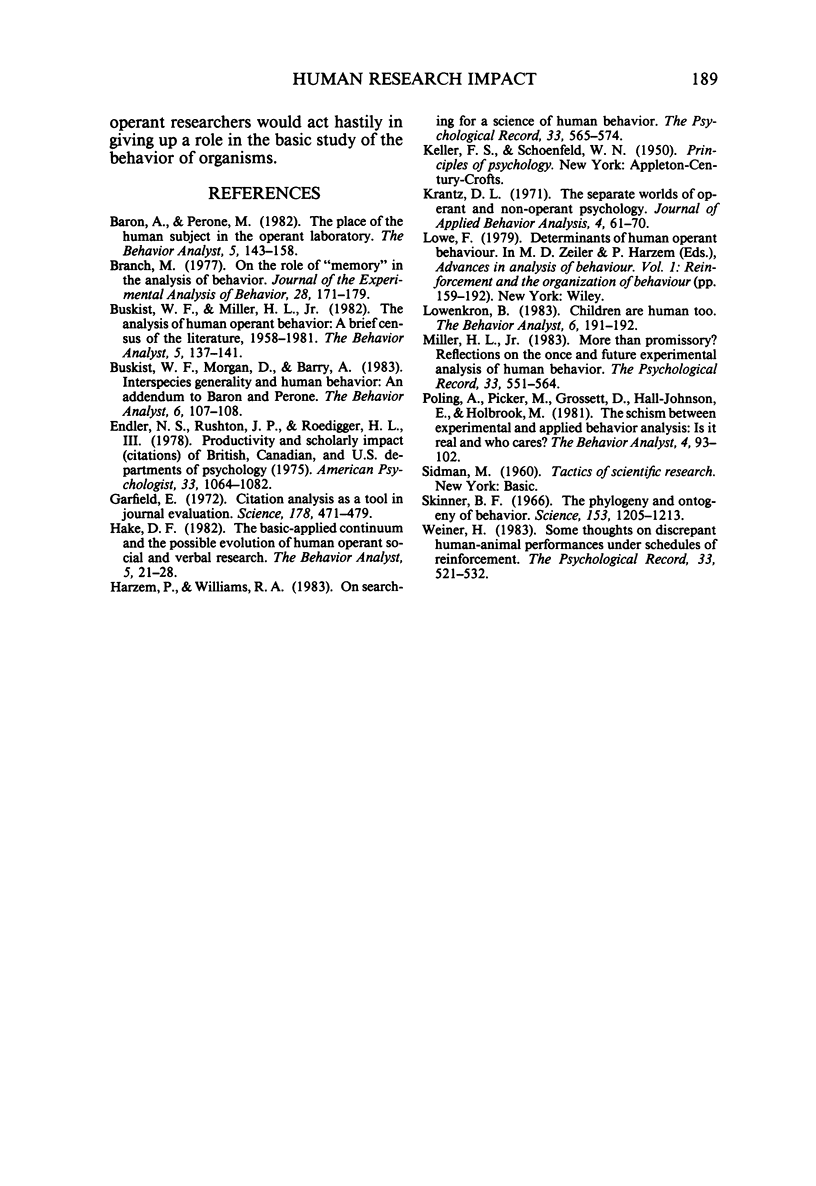
Selected References
These references are in PubMed. This may not be the complete list of references from this article.
- Baron A., Perone M. The place of the human subject in the operant laboratory. Behav Anal. 1982 Fall;5(2):143–158. doi: 10.1007/BF03392383. [DOI] [PMC free article] [PubMed] [Google Scholar]
- Branch M. N. On the role of "memory" in the analysis of behavior. J Exp Anal Behav. 1977 Sep;28(2):171–179. doi: 10.1901/jeab.1977.28-171. [DOI] [PMC free article] [PubMed] [Google Scholar]
- Buskist W. F., Miller H. L., Jr The analysis of human operant behavior: A brief census of the literature: 1958-1981. Behav Anal. 1982 Fall;5(2):137–141. doi: 10.1007/BF03392382. [DOI] [PMC free article] [PubMed] [Google Scholar]
- Buskist W. F., Morgan D., Barry A. Interspecies generality and human behavior: An addendum to Baron and Perone. Behav Anal. 1983 Spring;6(1):107–108. doi: 10.1007/BF03391878. [DOI] [PMC free article] [PubMed] [Google Scholar]
- Garfield E. Citation analysis as a tool in journal evaluation. Science. 1972 Nov 3;178(4060):471–479. doi: 10.1126/science.178.4060.471. [DOI] [PubMed] [Google Scholar]
- Hake D. F. The basic-applied continuum and the possible evolution of human operant social and verbal research. Behav Anal. 1982 Spring;5(1):21–28. doi: 10.1007/BF03393137. [DOI] [PMC free article] [PubMed] [Google Scholar]
- Krantz D. L. The separate worlds of operant and non-operant psychology. J Appl Behav Anal. 1971 Spring;4(1):61–70. doi: 10.1901/jaba.1971.4-61. [DOI] [PMC free article] [PubMed] [Google Scholar]
- Lowenkron B. Children are human too. Behav Anal. 1983 Fall;6(2):191–192. doi: 10.1007/BF03392401. [DOI] [PMC free article] [PubMed] [Google Scholar]
- Poling A., Picker M., Grossett D., Hall-Johnson E., Holbrook M. The schism between experimental and applied behavior analysis: Is it real and who cares? Behav Anal. 1981 Fall;4(2):93–102. doi: 10.1007/BF03391858. [DOI] [PMC free article] [PubMed] [Google Scholar]
- Skinner B. F. The phylogeny and ontogeny of behavior. Contingencies of reinforcement throw light on contingencies of survival in the evolution of behavior. Science. 1966 Sep 9;153(3741):1205–1213. doi: 10.1126/science.153.3741.1205. [DOI] [PubMed] [Google Scholar]


